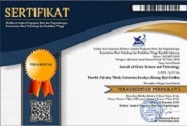RURAL LIVELIHOOD TRANSFORMATION AS AN EFFECT OF JATIGEDE DAM DEVELOPMENT IN SUMEDANG WEST JAVA
Abstract
Jatigede dam development in Sumedang, West Java, was planned in the 1960s and facing a dynamic revolution in Indonesia’s Governmental System. The political shift causes a change in the government’s priority of development, and as a result, this project had been postponed for decades. In the 1980s, The Government had given land compensation to the rural householder who lives at the site plan. The long-postponed development execution makes rural people unaware to leave the site and continue living on the compensated land for generations. Then in 2012, Government decides to execute the development as a targeted Indonesian Economic Master Plan to boost economic growth. This sudden regulation causes shock and stress for rural people’s livelihood since they should change their way of living in a short time since access to resources became limited by inundation. However, the Dam development unavoidably causes rural transformation that has an impact on rural people’s livelihood. Rural Livelihood transformation can be seen in livelihood assets including natural, financial, physical, human, and social assets condition after the inundation. This paper aims to identify the condition of rural livelihood assets as an impact of rural transformation caused by Jatigede Dam development in Sumedang, West Java. Therefore, the study outcomes were determined as a recommendation for preventing vulnerability by implementing programs for the impacted rural household.
Full Text:
PDFReferences
Berdegué, J. A., Rosada, T., dan Bebbington, A. J. (2014): The Rural Transformation, 463–478 dalam B. Currie-Alder, R. Kanbur, D. M. Malone, dan R. Medhora, ed., International Development, Oxford University Press. https://doi.org/10.1093/acprof:oso/9780199671656.003.0028
Carney, D., & Asley, C. (1999). Sustainable Livelihood: Lessons from Early Experience. London: DFID.
Chambers, R. (1995). Poverty and Livelihoods: Whose Reality Counts? (IDS Discussion Paper 347). Brighton, United Kingdom: IDS.
Chambers, R., & Conway, R. G. (1992). Sustainable Rural Livelihood: Practical Concept for The 21st Century (IDS Discussion Paper 296). England: Institute of Development Studies.
Creswell, J. W. (2013). Research Design Qualitative, Quantitative, and Mixed Method Approaches. California: SAGE.
Ellis, F. (1998). Household Strategies and Rural Livelihood Diversification. Frank Cass, (The Journal of Development Studies), 1–38. https://doi.org/10.1080700220389808422553
Liu, J., Liu, Y., dan Yan, M. (2016): Spatial and Temporal Change in Urban Rural Land Use Transformation at Village Scale - A Case Studi of Xuanhua District, North China, Elsevier, 425–434.
Niehof, A., & Price, L. (2001). Rural Livelihood Systems: A conceptual framework (UPWARD Working Paper, Vol. 1). Wageningen: WU UPWARD.
Rencana Pembangunan Jangka Menengah Nasional Republik Indonesia Tahun 2011-2025
Sarwono, J. (2011). Mixed Method. Jakarta: Gramedia.
Scoones, I. (1998). Sustainable Rural Livelihoods : A Framework for Analysis (IDS Working Paper 72). United Kingdom: IDS.
Scoones, I. (2015): Sustainable Livelihoods and Rural Development, Rugby, United Kingdom.
Sugiyono. (2009). Metode Penelitian Kombinasi. Bandung: ALFABETA.
Volgyes, I., Avery, W. P., dan Londsdale, R. (1980): The Process of Rural Transformation: Eastern Europe, Latin America, and Australia, Pergamon Press, USA.
https://www.undp.org/india/publications/guidance-note-recovery-livelihood
DOI: http://dx.doi.org/10.33603/jgst.v6i2.7500
Refbacks
- There are currently no refbacks.











